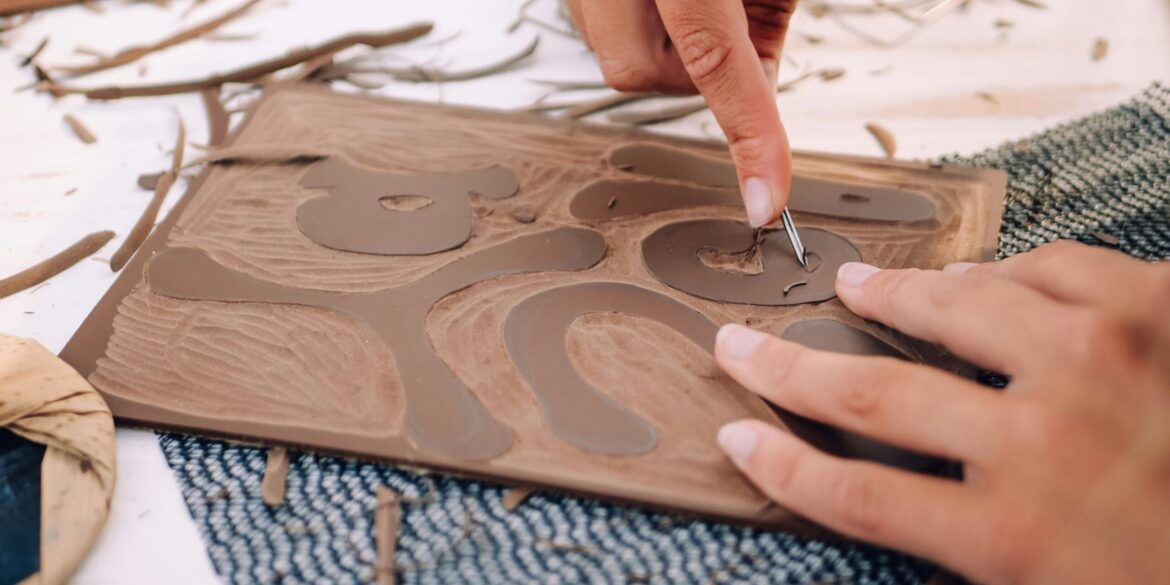By Carmen Voss, Senior Correspondent
From Portland’s bustling craft fairs to New Orleans’ vibrant artisan hubs, America’s handmade movement is thriving like never before. On May 22, 2025, artisans across the country are showcasing a resurgence of traditional craftsmanship fused with modern sustainability. This movement champions unique, eco-conscious creations that stand in bold contrast to mass-produced goods flooding the market. With a blend of time-honored techniques and contemporary design, these craftspeople are not only preserving cultural heritage but also driving economic growth in local communities.
A Renaissance of Craftsmanship Across America
In recent years, a renewed appreciation for handmade goods has taken hold across the United States. Experts attribute this surge to growing consumer awareness of sustainability and a desire for authenticity in the products they buy. According to the American Craft Council, the handmade market has grown by 20% annually over the past five years, with artisans reporting increased sales both in-person and online.
Sara Nguyen, a woodcarver based in Portland, shares how this movement is shaping her craft. “People want to know the story behind what they’re buying. They appreciate the time and care that goes into each piece,” Nguyen said. Her studio, bathed in natural light and filled with rich cedar and oak, is a testament to blending traditional carving methods with modern design aesthetics.
In New Orleans, textile artist Marcus Lee incorporates reclaimed fabrics into intricate woven wall hangings. “Sustainability isn’t just a buzzword for us,” Lee explains. “It’s a responsibility. Using eco-friendly materials ensures we protect the environment while keeping our craft alive.”
Sustainability at the Heart of Handmade
The push for sustainability is more than a trend; it’s a defining feature of the 2025 artisan movement. As climate concerns intensify, many craftspeople are choosing organic, recycled, and locally sourced materials.
A 2024 report from the Craft Sustainability Initiative highlights that 68% of American artisans now prioritize eco-friendly supplies in their work. This includes everything from plant-based dyes and natural fibers to responsibly harvested wood and zero-waste production methods.
Laura Hernandez, founder of the EcoCraft Collective, explains how sustainability shapes the artisan community. “We’re redefining luxury to mean quality, longevity, and minimal environmental impact,” Hernandez said. “Handmade items tell a story of care — care for the craft, the customer, and the planet.”
This philosophy is gaining traction with consumers, who increasingly prefer durable goods over disposable products. Etsy, one of the largest online marketplaces for handmade crafts, reported a 35% increase in sales of eco-conscious products in the last year alone.
Digital Marketplaces: Expanding Reach, Preserving Tradition
While handmade goods have long been sold at local fairs and specialty shops, the rise of digital platforms is revolutionizing how artisans connect with buyers. Websites like Etsy, Handmade at Amazon, and newer niche platforms such as ArtistryHub enable craftspeople to reach customers nationally and internationally without sacrificing the personal touch.
David Chen, who makes handcrafted pottery in Asheville, North Carolina, says, “Digital marketplaces have allowed me to tell my story to people I’d never meet otherwise. It’s not just about selling a product — it’s about sharing culture and passion.”
Craft fair organizer Tina Morales, who runs the annual Handmade Heritage Festival in Santa Fe, notes the digital shift complements physical events. “Our fairs still attract crowds hungry for face-to-face connections with artisans. But online sales sustain artists year-round, offering financial stability and community growth.”
Supporting Local Economies and Cultural Heritage
The handmade movement’s impact goes beyond artistry—it fuels local economies and preserves cultural identities. Small-scale artisan businesses contribute significantly to job creation, tourism, and community development.
In Vermont’s Northeast Kingdom, craft workshops and studios have become a cornerstone of regional revival efforts. “Artisans bring life back to rural areas,” said Mayor Paul Emerson of Hardwick. “Their work attracts visitors and encourages investment, creating a virtuous cycle of growth.”
Cultural preservation is equally vital. Many American artisans draw from Indigenous, immigrant, and regional traditions, keeping age-old techniques alive while adapting to modern tastes. This blending enriches America’s cultural tapestry and offers buyers meaningful connections to heritage.
Voices from the Movement: Interviews with Artisans and Organizers
To capture the spirit of the handmade resurgence, we spoke with several key figures leading the charge:
-
Emily Carter, leatherworker and founder of the Artisan Alliance in Asheville, emphasizes the community aspect. “Our group supports each other through shared resources, workshops, and joint marketing. It’s about collaboration, not competition.”
-
Carlos Ramirez, organizer of the Brooklyn Handmade Market, remarks on diversity’s role. “Our vendors represent a broad spectrum of cultures and crafts. This inclusivity is what makes the movement vibrant and resilient.”
-
Hannah Kim, a ceramic artist based in Seattle, highlights innovation. “Combining traditional forms with new glazing techniques allows me to create pieces that feel timeless yet fresh.”
What This Means for American Consumers in 2025
The handmade movement invites Americans to rethink consumption patterns, favoring quality, sustainability, and connection. As more consumers demand transparency about materials and origins, artisans are positioned to lead a cultural shift.
Key takeaways:
-
Handmade goods emphasize sustainability through eco-friendly materials and zero-waste processes.
-
Digital platforms expand artisan reach, supporting year-round sales and community growth.
-
Local economies benefit from artisan-driven job creation and tourism.
-
Cultural heritage preservation remains central, blending tradition with modern aesthetics.
-
Community and collaboration strengthen the artisan ecosystem across the U.S.
Looking Ahead: The Future of Handmade Craftsmanship
Experts predict the handmade movement will continue to evolve with advances in technology and changing consumer values. Augmented reality (AR) shopping experiences, for example, could allow buyers to virtually explore artisans’ studios and craft processes.
Additionally, educational initiatives aim to pass skills to younger generations, ensuring craftsmanship remains a viable career path. Partnerships between artisans and sustainability organizations promise further innovation in green materials and practices.
As America’s artisans chart this exciting course, they offer more than products—they provide a vision of a future where creativity, community, and care intertwine.

